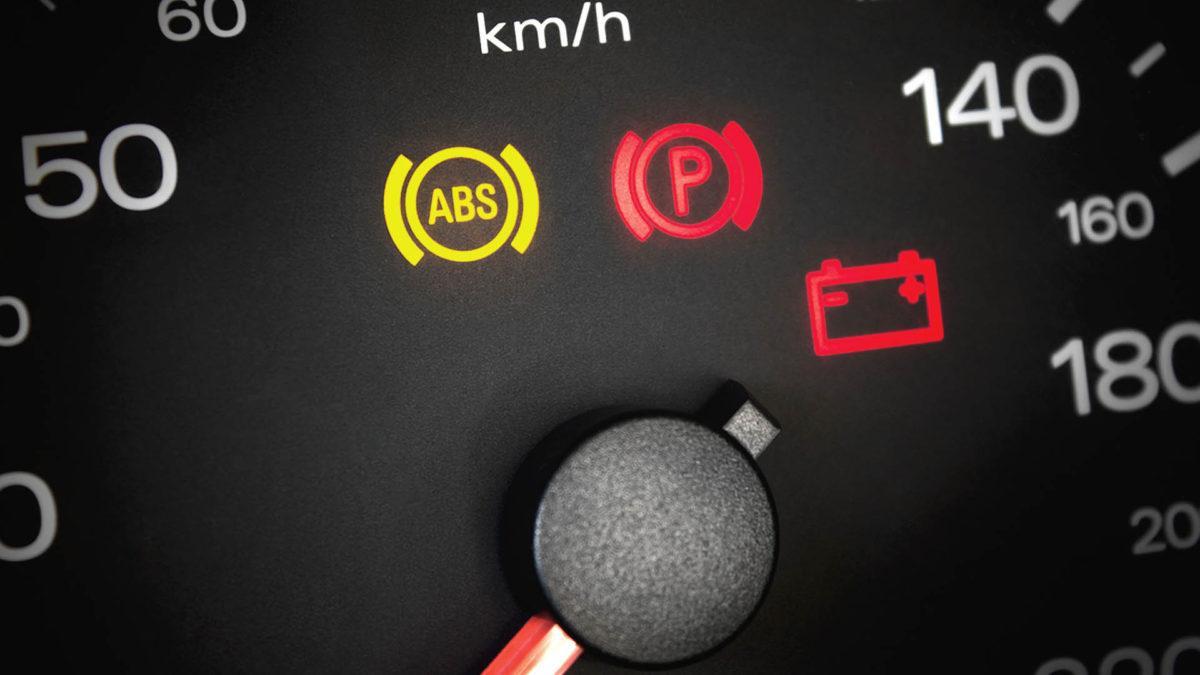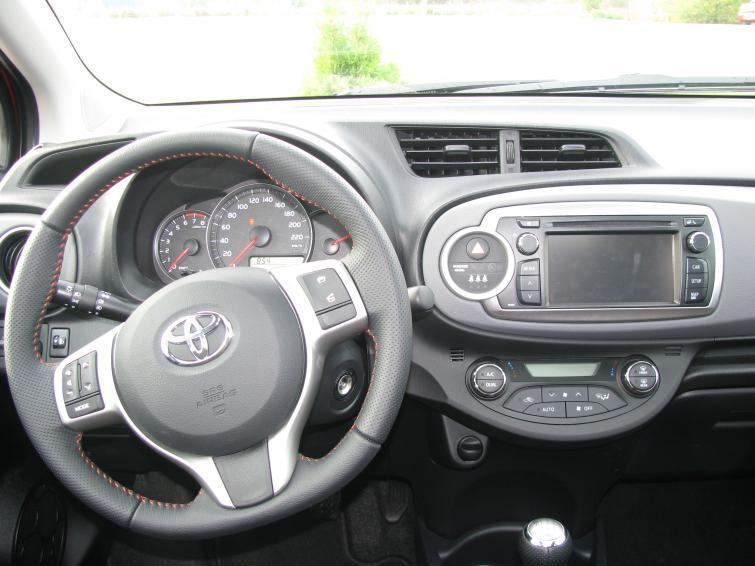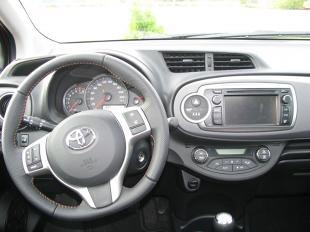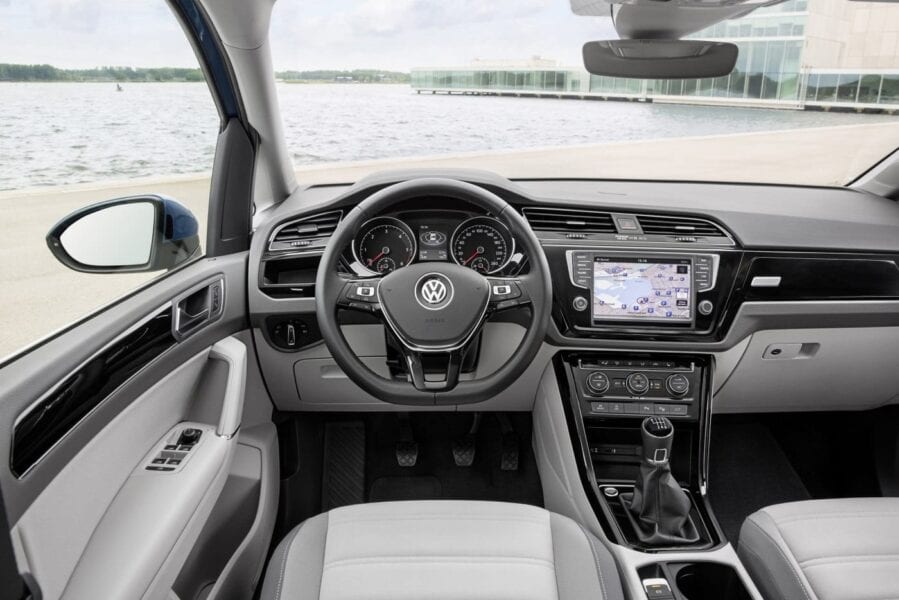
ABS, ESP, TDI, DSG and others - what do car abbreviations mean
 Find out what is behind popular automotive abbreviations such as ABS, ESP, TDI, DSG and ASR.
Find out what is behind popular automotive abbreviations such as ABS, ESP, TDI, DSG and ASR.

The average driver may get dizzy from the acronyms used to refer to various systems in cars. Moreover, modern cars are replete with electronic systems, the names of which are often not developed in price lists. It is also worth knowing what a used car is actually equipped with or what the engine abbreviation means.
See also: ESP, cruise control, parking sensors - what equipment is on the car?
Below we provide relevant descriptions of the most important and popular abbreviations and terms.
4 - MATIK - permanent four-wheel drive in Mercedes cars. It can only be found in cars with automatic transmission.
4 - MOVEMENT - four-wheel drive. Volkswagen uses it.
4WD - four-wheel drive.
8V, 16V - the number and arrangement of valves on the engine. The 8V unit has two valves per cylinder, i.e. a four-cylinder engine has eight valves. On the other hand, at 16V, there are four valves per cylinder, so there are 16 valves in a four-cylinder engine.
HUNGRY - air conditioning.
ADVERTISEMENT – electronic system for maintaining a constant vehicle speed.
AB (airbag) - air bag. In new cars, we find at least two frontal airbags: the driver's and the passenger's. Older cars may or may not have them. They are part of passive safety systems and are designed to absorb the impact of parts of the weapon (mainly the head) on the details of the car in an accident. The number of vehicles and equipment versions is growing, including side airbags, curtain airbags or a knee airbag - protecting the driver's knees.
ABC
– active suspension adjustment. Its purpose is to actively control body roll. It works well when driving fast in corners or when braking hard when the car has a tendency to dive.
ABD - Automatic differential lock.
ABS - Anti-lock braking system. It is part of the braking system. This allows, for example, greater control of the vehicle/its handling after depressing the brake pedal.
ACC – Active control of speed and distance to the vehicle in front. This allows you to adjust the appropriate speed to keep a safe distance. If necessary, the system can brake the vehicle. Another name for this chip is ICC.
AFS – adaptive front light system. It controls the dipped beam, adjusting its beam according to road conditions.
AFL – Cornering lighting system through the headlights.
ALR - automatic locking of the seat belt tensioner.
ASR – traction control system. Responsible for preventing wheel slip during acceleration, i.e. spinning. As soon as wheel slip is detected, its speed is reduced. In practice, for example, when the car is covered with sand, sometimes the system should be turned off so that the wheels can spin. Other names for this chip are DCS or TCS.
AT - Automatic transmission.
See also: Gearbox operation - how to avoid costly repairs
BAS
– electronic brake booster. Works with ABS. Maximizes the efficiency of the braking system during hard emergency braking. For example, Ford has a different name - EVA, and Skoda - MVA.
Permanent – Mercedes diesel engine with common rail diesel direct injection.
CDTI - diesel engine with direct fuel injection. Used in Opel cars.
CR/common rail - type of fuel injection in diesel engines. The advantages of this solution include smoother engine operation, better fuel consumption, less noise and less poisons in the exhaust gases.
CRD - diesel engines with common rail injection system. Used in the following brands: Jeep, Chrysler, Dodge.
IDRC
– diesel engines used in Kia and Hyundai vehicles.
See also: Brake system - when to change pads, discs and fluid - guide
D4 – Toyota four-cylinder gasoline engines with direct fuel injection.
D4D – Toyota four-cylinder diesel engines with direct fuel injection.
D5 – Volvo diesel engine with direct fuel injection.
DCI – Renault diesel engines with direct fuel injection.
DID – Mitsubishi diesel engines with direct fuel injection.
DPF or FAP - particulate filter. It is installed in the exhaust systems of modern diesel engines. Cleans exhaust gases from soot particles. The introduction of DPF filters has eliminated the emission of black smoke, which is typical for older cars with diesel engines. However, many drivers find this item a big hassle with cleaning it.
DOHC - a double camshaft in the head of the power unit. One of them is responsible for controlling the intake valves, the other for the exhaust valves.
DSG – gearbox introduced by Volkswagen. This gearbox has two clutches, one for even gears and one for odd gears. There is an automatic mode as well as a sequential manual mode. The gearbox here works very quickly - gear shifts are virtually instantaneous.
DTI - diesel engine, known from Opel cars.
EBD – Electronic brake force distribution (front, rear, right and left wheels).
EBS – electronic braking system.
EDS - electronic differential lock.
EFI - electronic fuel injection for gasoline engines.
ESP / ESC – electronic stabilization of the vehicle path (also prevents side skidding and prevents loss of control). When the sensors detect a vehicle skid, for example after entering a corner, the system brakes the wheels (one or more) to bring the vehicle back on track. Depending on the car manufacturer, different terms for this system are used: VSA, VDK, DSC, DSA.
See also: defroster or ice scraper? Methods for cleaning windows from snow
FSI - designation of gasoline engines with direct fuel injection. They were developed by Volkswagen.
FWD - this is how cars with front-wheel drive are marked.
GDI – Mitsubishi gasoline engine with direct fuel injection. It has more power, less fuel consumption and less emissions of harmful substances into the atmosphere compared to a conventional engine.
GT i.e. Gran Turismo. Such sporty, strong versions of production cars are described.
HBA – hydraulic brake assistant for emergency braking.
HDC - hill descent control system. Limits the speed to the set speed.
HDI
– high-pressure power supply system of a diesel engine with direct fuel injection. Drive units are also referred to as this. The designation is used by Peugeot and Citroen.
hill holder - that's the name of the hill start assistant. We can stop the car on the hill and it won't roll down. There is no need to use the handbrake. The moment we move, the system stops working.
HPI – High pressure gasoline direct injection and identification of gasoline engines in which it is used. The solution is used by Peugeot and Citroen.
See also: Turbo in the car - more power, but more trouble. Guide
IDE - Renault gasoline engines with direct fuel injection.
isofix – System for attaching child seats to car seats.
JT extension – Fiat diesel engines, also found in Lancia and Alfa Romeo. They have direct common rail fuel injection.
JTS - These are Fiat gasoline engines with direct fuel injection.
KM - power in horsepower: for example, 105 hp
km / h – speed in kilometers per hour: for example, 120 km/h.
LED
- light emitting diode. LEDs have a much longer lifespan than traditional automotive lighting. They are most often used in taillights and daytime running modules.
LSD - self-locking differential.
MPI – Engines with multipoint injection.
MSR - anti-skid system that complements the ASR. It prevents the wheels from spinning when the driver brakes with the engine.
MT - Manual Transmission.
MZR – Mazda gasoline engine family.
MZR-CD – Mazda common rail injection engine used in current models.
RWD These are rear wheel drive vehicles.
SAHR – Saab active head restraint. In the event of a rear impact, this reduces the risk of whiplash injury.
SBC – Electronic brake control system. Used in Mercedes. It combines other systems that affect the vehicle's braking, such as BAS, EBD or ABS, ESP (partially).
SDI - naturally aspirated diesel engine with direct fuel injection. These units are typical for Volkswagen cars.
SOHC - this is how engines with one upper camshaft are marked.
SRS - passive safety system, including seat belt pretensioners with airbags.
Krd4 / Kd5 - Land Rover diesels.
TDKI – Ford diesel engines with common rail direct injection.
TDDI - Ford turbocharged diesel with intercooler.
TDI - turbodiesel with direct fuel injection. This designation is used in cars of the Volkswagen group.
TDS is a more powerful version of the TD diesel engine used by BMW. Marking TD or earlier D was used in the entire mass of cars, regardless of manufacturer. The TDS motor was also installed, for example, in the Opel Omega. The opinions of many users are such that Opel had more breakdowns and caused more trouble.
See also: Engine tuning - in search of power - guide
TSI - This designation refers to gasoline engines with dual supercharging. This is a solution developed by Volkswagen that increases the power of the powertrain without causing increased fuel consumption compared to a conventional engine.
TFSI - these engines are also supercharged gasoline engines - installed on Audi cars - they are distinguished by high power and relatively low fuel consumption.
TiD - turbodiesel, assembled in Sabah.
TTiD - a two-charge unit used in Saab.
V6 - V-shaped engine with 6 cylinders.
V8 – V-shaped unit with eight cylinders.
VTEC
- electronic valve control, variable valve timing system. Used in Honda.
VTG - turbocharger with variable turbine geometry. This is necessary to eliminate the so-called turbo lag.
VVT-I - a system for changing the valve timing. Found in Toyota.
Zetec - Ford four-cylinder gasoline engines with four valves per cylinder. The head has two camshafts.
Opinion - Radosław Jaskulski, safety driving instructor at Auto Skoda School:
Indeed, automotive technology is advancing so rapidly that we now find newer and more advanced technologies in cars than even six months or a year ago. When it comes to active safety systems, some of them deserve special attention and it is worth checking if they are in it when buying a new or used car. Because they really help.
At the core, of course, ABS. A car without ABS is like driving a cart. I often see people who want to buy a used, old car say, "Why do I need ABS?" There is air conditioning, that's enough. My answer is short. If you put comfort over safety, then this is a very strange, illogical choice. I would like to emphasize that it is good to know what ABS is in a car. The older generations of this system were efficient, they worked, but controlled the vehicle's axles. On the descent, when the car skidded, the rear could start to run away even more. In newer generations, a brake force distribution system has appeared on individual wheels. Perfect solution.
Auxiliary braking is an important part of the braking system. However, it's good to check in a safe place how it works in a particular model. In all of them, it turns on immediately when you press the brake pedal hard, but functions such as alarms are not always turned on at the same time. It should also be remembered that if, before the car comes to a complete stop, the driver takes his foot off the gas even for a moment, because, for example, the threat has passed, the system will turn off.
We come to the ESP. This is actually a mine of systems because it has a huge number of functions. Even though I follow the news and try to stay up to date, I can't remember them all. Either way, ESP is a great solution. Keeps the car stable on the track, turns on - even when the rear starts to overtake the front of the car - really immediately. Current ESP systems prevent all wheels from decelerating as quickly as possible in a critical road situation. ESP has one strong advantage over any driver: it always reacts in the same way and from the first fraction of a second, and not from one second when the reaction time has elapsed.
Text and photo: Piotr Walchak
